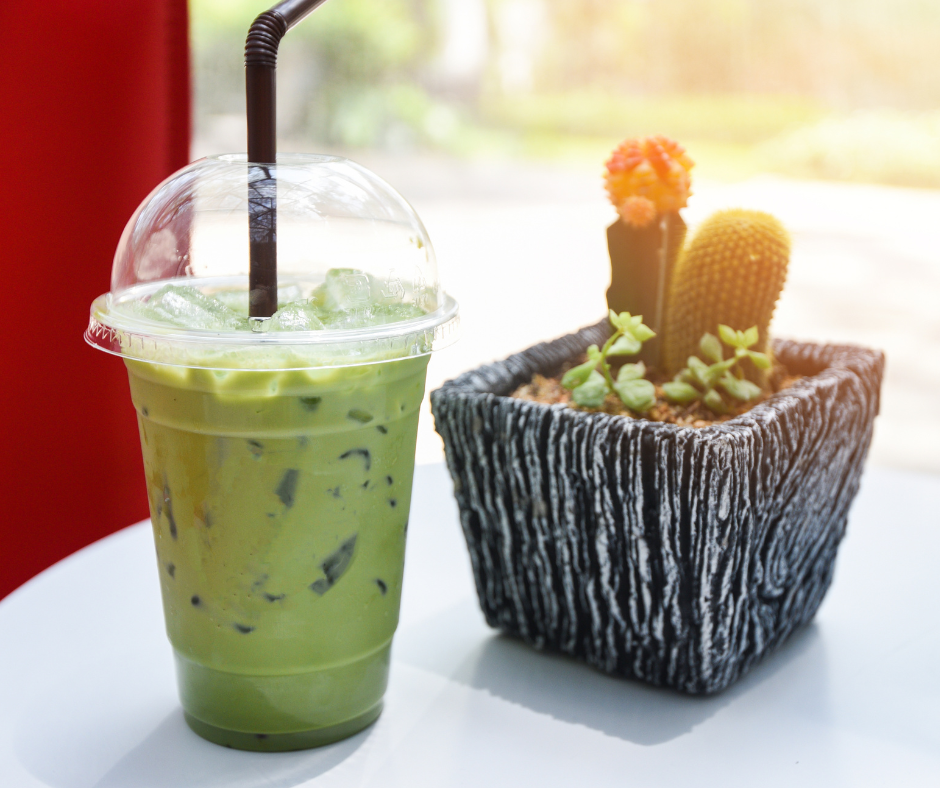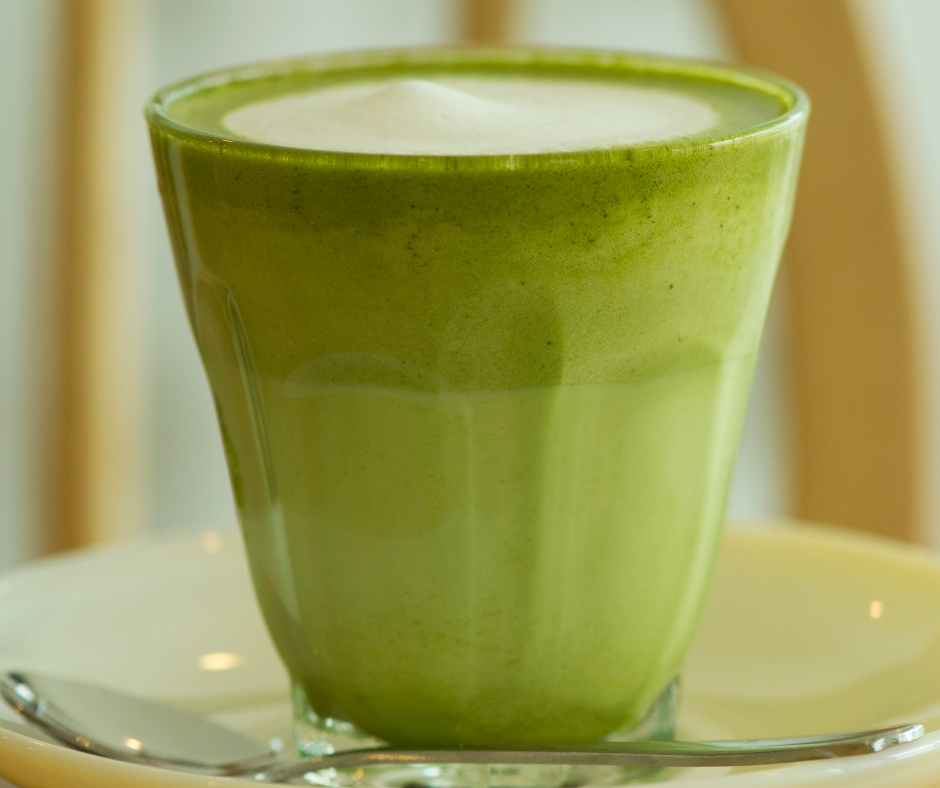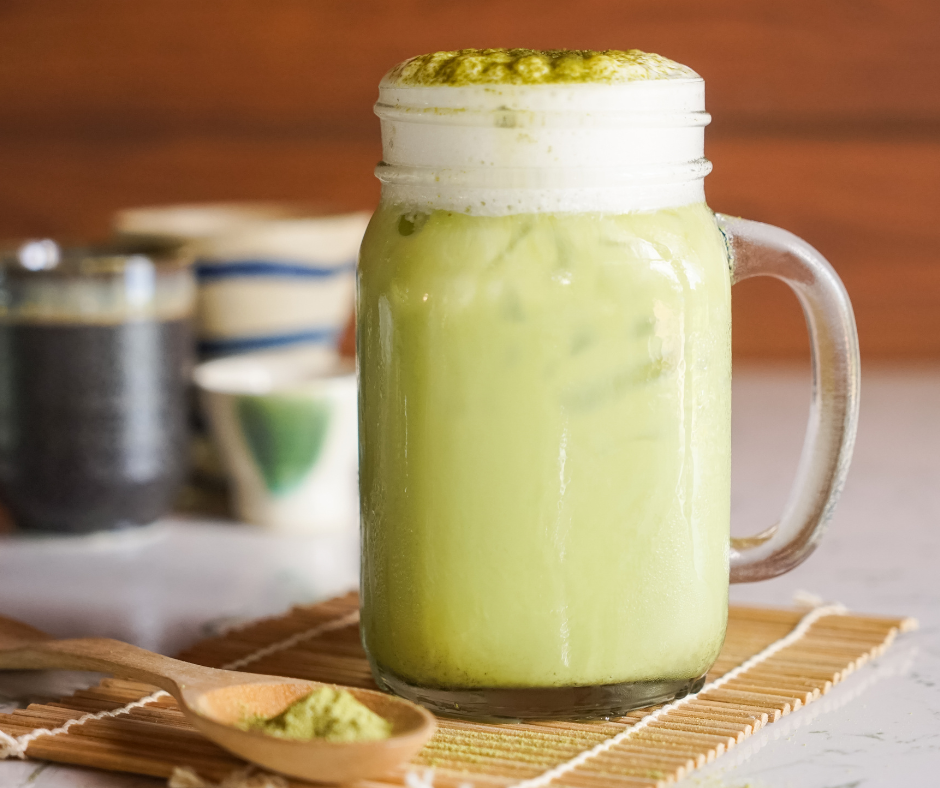Introduction
Matcha green tea has gained popularity for its numerous health benefits and unique taste. Along with its popularity comes questions surrounding its caffeine content and how it compares to other common sources of caffeine, like coffee. So, How Much Caffeine is In Matcha Green Tea? In this article, we will explore the caffeine content of matcha green tea and why it is important to consider.
What Is Matcha Green Tea?
Matcha green tea is a type of green tea that is made from shade-grown tea leaves. The leaves are then ground into a fine powder whisked with hot water to make a frothy drink. Unlike regular green tea, when consuming matcha, you ingest the whole tea leaf, resulting in a higher nutritional content. This is why matcha is often referred to as a “superfood.”
Why Is Caffeine Content Important?
Caffeine is a natural stimulant that can affect the central nervous system, making you feel more alert and awake. It is beneficial for improving cognitive function and can even boost physical performance. However, consuming too much caffeine can have negative effects, such as anxiety and insomnia. It is essential to consume caffeine in moderation and be aware of the amount in your drinks.
Matcha green tea typically has more caffeine than regular green tea but less caffeine than coffee. This is due to the buds and young leaves of the tea plant containing higher levels of caffeine than mature leaves. The balance of caffeine, theanine, and catechins, all components found in matcha, define the quality of the tea. Matcha also has a high “umami” flavor due to its high content of amino acids.
In summary, matcha green tea contains caffeine but has less caffeine than coffee. Consuming matcha in moderation and being aware of its caffeine content is essential. The unique blend of nutrients and caffeine found in matcha makes it a great alternative for those who want a healthier source of caffeine.
The History Of Matcha Green Tea
Origins Of Matcha Green Tea
Matcha green tea is believed to have originated in China during the Tang Dynasty (618-907 CE). The tea was later brought to Japan by Buddhist monks, where it gained widespread popularity during the Kamakura period (1185-1333 CE). Tea was used in religious ceremonies and became an integral part of Japanese culture.
Matcha green tea is made from shade-grown tea leaves, which are then ground into a fine powder for a frothy drink. The process of shade-growing tea, producing gyokuro green tea, was first introduced in Japan during the 12th century. Matcha green tea was later developed from gyokuro, with both types of tea originating from the same tea plant, Camellia sinensis.
Cultural Significance In Japan
Matcha green tea has played a significant role in Japanese culture for centuries. It was used in religious ceremonies, such as the Japanese tea ceremony, also known as Chanoyu or Sado. The tea ceremony symbolizes harmony, respect, and tranquility and encompasses the principles of Zen Buddhism.
Matcha green tea was also popular among the Samurai class in Japan, who enjoyed its health benefits and energy-boosting properties. For almost 750 years, matcha remained a secret tea amongst Japan’s elite. It wasn’t until the 16th century that matcha became more widely available to the general public.
In modern times, matcha green tea has gained popularity worldwide for its unique taste and numerous health benefits. It has become a popular alternative to coffee, and its popularity continues to grow as more people discover its rich cultural significance and health benefits.
Understanding Caffeine
What Is Caffeine?
Caffeine is a natural stimulant in various foods and beverages, such as coffee, tea, chocolate, and soft drinks. It is also used in certain medications and supplements. Caffeine works by blocking adenosine, a neurotransmitter that causes drowsiness. This, in turn, increases levels of other neurotransmitters, such as dopamine and norepinephrine, which promote alertness and focus.
How Does Caffeine Affect The Body?
Caffeine can have several effects on the body, depending on the amount consumed and individual tolerance levels. It can help increase energy levels, improve cognitive function, and boost physical performance. However, excessive caffeine consumption can lead to negative side effects, such as jitters, anxiety, restlessness, and insomnia.
Regarding matcha tea, the caffeine content can vary widely depending on factors such as the type of leaves used, the amount of powder used, and brewing time. Generally, matcha contains anywhere from 19 to 44 mg of caffeine per gram. This makes it higher in caffeine than most regular green teas but still lower than coffee. It’s important to note that the caffeine in matcha is quite different from that found in coffee. Matcha contains L-theanine, an amino acid that can counteract the negative effects of caffeine by promoting relaxation and reducing stress.
Caffeine is a natural stimulant in various foods and beverages, including matcha green tea. While matcha is generally lower in caffeine than coffee, it can still boost energy and focus. It’s important to consume caffeine in moderation and be mindful of individual tolerance levels.
Types Of Green Tea
Matcha Vs. Regular Green Tea
Green tea is a popular beverage that has been consumed for centuries due to its health benefits. Matcha and regular green tea are two popular types. Matcha tea is made by grinding green tea leaves into a fine powder, while regular green tea is brewed by steeping the leaves in water. The preparation process is what sets the two apart.
Matcha tea is known for being more concentrated and nutrient-dense than regular green tea. It contains more caffeine and antioxidants, such as polyphenols and EGCG. It also has a unique flavor profile described as earthy, bitter, and slightly sweet. Regular green tea, on the other hand, has a more delicate and grassy taste.
Caffeine Content In Different Types Of Green Tea
As previously mentioned, matcha contains more caffeine than regular green tea. A typical serving of matcha provides around 70mg of caffeine per 8oz cup, while a regular green tea contains around 25-45mg. This makes matcha a good option for people looking for a quick energy boost, especially in the morning or mid-day.
Other types of green tea, such as sencha and gyokuro, also contain caffeine but in lower amounts. Gyokuro is known for being the highest grade of Japanese green tea and has a rich, sweet flavor. Sencha is considered the most popular type of green tea in Japan and has a more vegetal taste with a subtle sweetness. These two types of green tea contain around 20-25mg of caffeine per 8oz cup, making them suitable for people sensitive to caffeine.
In conclusion, matcha, regular green tea, sencha, and gyokuro are all types of green tea with different flavors and caffeine content. Matcha is more concentrated and contains the most caffeine, while regular green tea, sencha, and gyokuro have milder caffeine content and unique flavor profiles. Choosing a type of green tea that suits your taste and caffeine needs is important. As with any caffeinated beverage, it’s essential to consume it in moderation and ensure it does not exceed the recommended daily limit.
Caffeine Content In Matcha Green Tea
How Much Caffeine In Matcha Green Tea?
Matcha green tea is a type of green tea that is made by grinding green tea leaves into a fine powder. It is known for its earthy, bitter, and slightly sweet flavor and is a popular beverage among health enthusiasts. One key factor differentiating matcha green tea from other green teas is its caffeine content. So, How Much Caffeine is In Matcha Green Tea?
A typical serving of matcha green tea provides around 70mg of caffeine per 8oz cup, significantly higher than regular green tea. Regular green tea, on the other hand, contains around 25-45mg of caffeine per cup. The amount of caffeine in matcha green tea can vary depending on factors such as the quality of the tea, the freshness of the leaves, and how it is brewed.
Factors That Affect Caffeine Content
Several factors can affect the caffeine content of matcha green tea. Here are some of the key factors:
- Tea Quality: The quality of the tea can play a significant role in the caffeine content of matcha green tea. Generally, higher-quality teas come from younger tea leaves, and the younger the leaves are at harvest, the higher the caffeine level can be.
- Style of Tea: Different tea styles contain varying levels of caffeine. Matcha green tea contains higher amounts of caffeine than regular green tea. Other types of green tea, such as sencha and gyokuro, have a lower caffeine content.
- Brewing Method: How matcha green tea is brewed can also affect caffeine content. The caffeine content can vary depending on how much powder is used, how fresh it is, and the brewing temperature and time.
In conclusion, matcha green tea is a popular beverage known for its high caffeine content and unique flavor profile. People looking for a quick energy boost may prefer matcha green tea over regular green tea, while those sensitive to caffeine may opt for other green tea with milder caffeine content. Regardless of the type of green tea, it is essential to drink it in moderation and not exceed the recommended daily caffeine limit.
Benefits Of Matcha Green Tea
Antioxidants And Nutrients
Matcha green tea is known to have high levels of antioxidants and nutrients because the entire tea leaf is consumed. It contains more caffeine and antioxidants than regular green tea. Studies show that matcha can reduce the risk of heart disease by 11% in individuals who regularly drink it. Matcha also contains the amino acid L-theanine, which promotes relaxation and reduces stress.
Boosts Metabolism And Energy
Matcha green tea is a natural energy source due to its high nutrient content. The tea leaves used to make matcha are grown in the shade, which increases their chlorophyll content and gives them their characteristic vibrant green color. This process also increases the leaves’ caffeine content. However, matcha’s caffeine percentage is lower than espresso’s.
Some studies show that green tea extract can help increase metabolism and fat burning, which may aid in weight loss. Matcha is also known to boost energy levels and improve mental alertness. It is a popular alternative to coffee for those looking for a natural energy boost.
In conclusion, matcha green tea is a popular beverage for health enthusiasts. It is known for its high nutrient content, unique flavor profile, and natural energy source. Regular consumption of matcha may reduce the risk of heart disease, boost energy levels, and aid in weight loss. However, it is important to drink it in moderation and not exceed the recommended daily caffeine limit.
Side Effects Of Caffeine
Insomnia And Restlessness
While moderate caffeine intake can promote wakefulness and enhance mental alertness, excessive consumption can lead to negative side effects. One of the most common side effects is insomnia or difficulty falling and staying asleep. Caffeine stimulates the nervous system, which can disrupt the body’s natural sleep cycle. In addition to insomnia, excessive caffeine intake may cause feelings of restlessness and agitation, making it difficult to relax.
Jitteriness And Anxiety
Another common side effect of caffeine is jitteriness or shakiness. This can be especially pronounced in those who are sensitive to caffeine or consume it in excessive amounts. Jitteriness is often accompanied by feelings of anxiety or nervousness, which can further exacerbate the body’s stress response. Over time, chronic caffeine intake may also lead to an irregular heartbeat or other cardiovascular problems.
It is important to note that the effects of caffeine can vary widely depending on factors such as individual sensitivity, the amount consumed, and the timing of consumption. While matcha contains caffeine, its unique amino acid profile may mitigate some of the negative side effects of caffeine.
Additionally, consuming matcha in moderation and within recommended limits can help maximize its positive health benefits while avoiding any potential negative effects. As with any dietary supplement, it is always advisable to consult a healthcare professional before adding matcha to your diet, especially if you have underlying health conditions or are taking medications.
How To Enjoy Matcha Green Tea
Matcha green tea has become increasingly popular due to its potential health benefits, high concentration of antioxidants, and unique preparation process. Here are some ways to enjoy matcha:
Traditional Preparation Methods
One common method to prepare matcha is the traditional Japanese tea ceremony called chanoyu. The process involves using a bamboo whisk, or chasen, to blend the matcha powder with hot water until a frothy texture is achieved. This method is highly ritualistic and can take years of practice to perfect.
Another traditional method is usucha, a thinner matcha version typically served in Japanese tea shops or at home. To make usucha, more hot water is added to the matcha powder than with the thick version, koicha.
Modern Recipe Ideas
Matcha powder can also be used creatively to add a healthy boost to various recipes. Here are some ideas:
- Matcha latte: Add a teaspoon of matcha powder to steamed milk and sweeten with honey or agave syrup for a delicious and frothy drink.
- Matcha smoothie: Blend matcha powder with frozen fruit, almond milk, and Greek yogurt for a nutrient-packed smoothie.
- Matcha ice cream: Mix matcha powder into a custard base and freeze for a refreshing and creamy dessert.
- Matcha seasoning: Use matcha powder for roasted nuts, popcorn, or savory dishes like roasted vegetables or grilled fish.
Matcha green tea can be enjoyed in various traditional and modern ways. Whether you prepare it using the Japanese tea ceremony or experiment with creative recipes in the kitchen, adding matcha to your diet can offer numerous potential health benefits. As with any dietary supplement, it is important to consume matcha in moderation and consult a healthcare professional before adding it to your routine.
Conclusion
Summary Of Matcha Green Tea And Caffeine Content
Now you should know the answer to ‘How Much Caffeine In Matcha Green Tea?’. Matcha green tea has a relatively high caffeine content compared to other green teas. This gives it a unique aroma and flavor. The caffeine content in matcha typically ranges from 18.9 to 44.4 mg/g compared to other green teas, with a caffeine content of around 9-50 mg/g. Matcha also contains phenolic acids with high antioxidant and anti-inflammatory potential and neuroprotective and hypoglycemic effects.
Final Thoughts On Incorporating Matcha Into A Healthy Lifestyle.
Adding matcha to your diet can provide potential health benefits due to its high antioxidants and natural component concentration. It is essential to consume matcha in moderation to reap the maximum benefits. One can include matcha traditionally, like a Japanese tea ceremony, or try modern recipe ideas like matcha lattes, smoothies, and even ice cream. Incorporating it into your daily routine can help manage stress levels, improve brain function, boost metabolism, and support heart health.
In conclusion, matcha green tea is a delicious and nutritious superfood. It can be enjoyed traditionally and in modern recipes, making it a versatile ingredient that adds value to your health. Consuming matcha in moderation can benefit your overall well-being and lifestyle.
FAQ: How Much Caffeine In Matcha Green Tea?
Q: What is matcha green tea?
A: Matcha green tea is a type of green tea that is ground into a fine powder.
Q: How Much Caffeine In Matcha Green Tea compares to other green teas?
A: Matcha green tea is generally higher in caffeine than other green teas. An 8-ounce cup of regular green tea contains about 30 mg of caffeine, while an 8-ounce cup of matcha green tea can contain anywhere from 40-75 mg.
Q: Is matcha green tea higher in caffeine than black tea?
A: It depends on the specific type and brewing method of the matcha and black tea being compared. However, on average, black tea tends to have slightly more caffeine than matcha green tea.
Q: Can matcha green tea be brewed like regular tea?
A: Matcha green tea is traditionally prepared by whisking the powder into hot water until frothy. It can also be used as an ingredient in various dishes and drinks.
Q: Can matcha green tea be found in coffee shops and cafes?
A: Many coffee shops and cafes now offer matcha green tea latte on their menu.
Q: What are the benefits of drinking matcha green tea?
A: As a type of green tea, matcha has been linked to various health benefits, including improved brain function, increased fat burning, and lower risk of certain diseases. However, like any food or drink, it should be consumed as a balanced and healthy diet.

Deb Carlson at Crosslake Coffee: Join Deb at Crosslake Coffee for a delightful blend of community, caffeine, and creativity. Discover the cozy ambiance and warm hospitality that make this local coffee shop a beloved gathering spot. From expertly crafted espresso drinks to mouthwatering pastries, Deb invites you to savor every sip and bite. Stay connected with the latest updates on specials, events, and live music performances by following Deb Carlson at Crosslake Coffee on social media. Embrace the vibrant online community and share your love for great coffee and good company with fellow enthusiasts. Don’t miss out on a moment of the Crosslake Coffee experience – connect with Deb on social media today.



